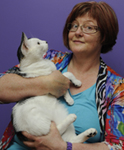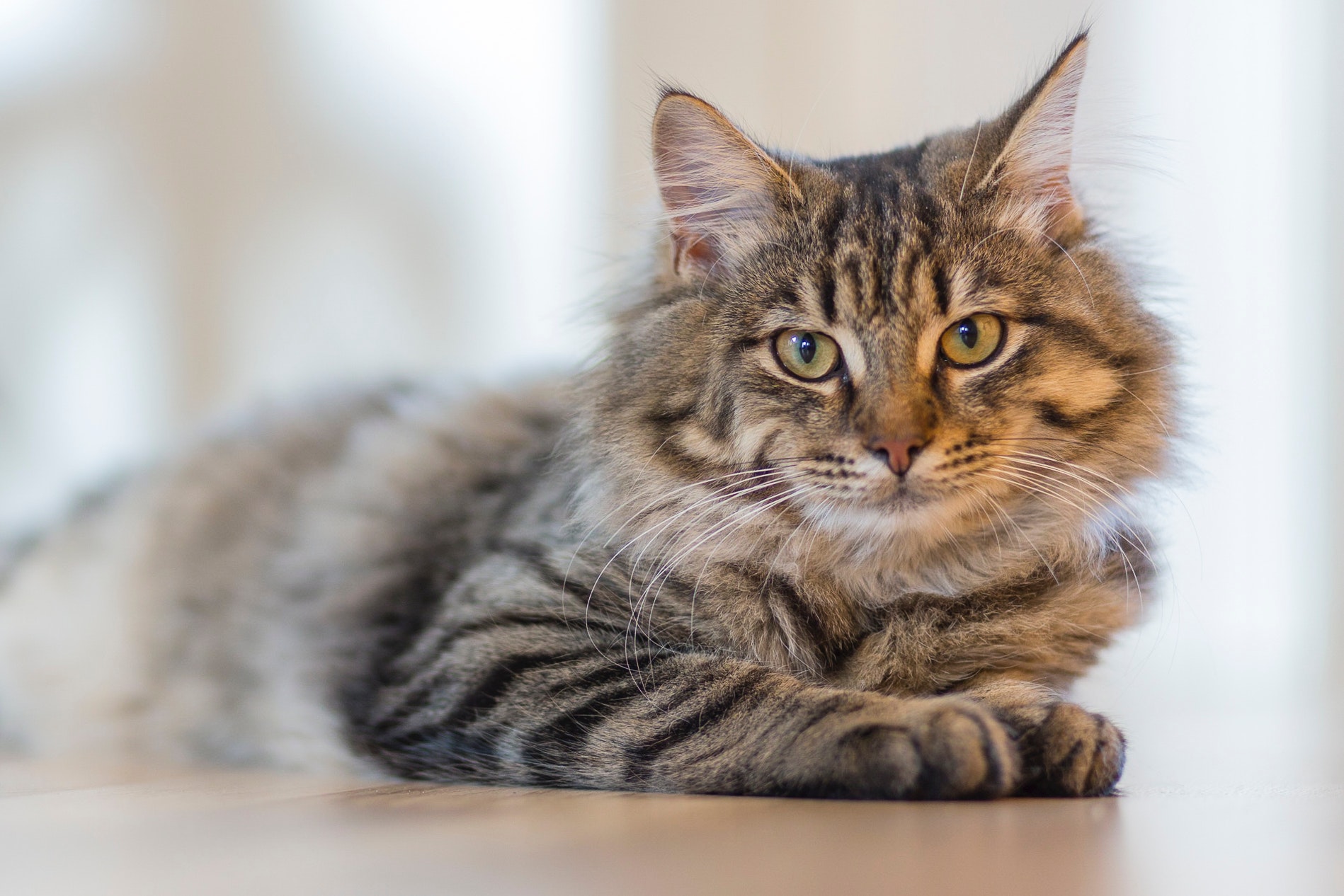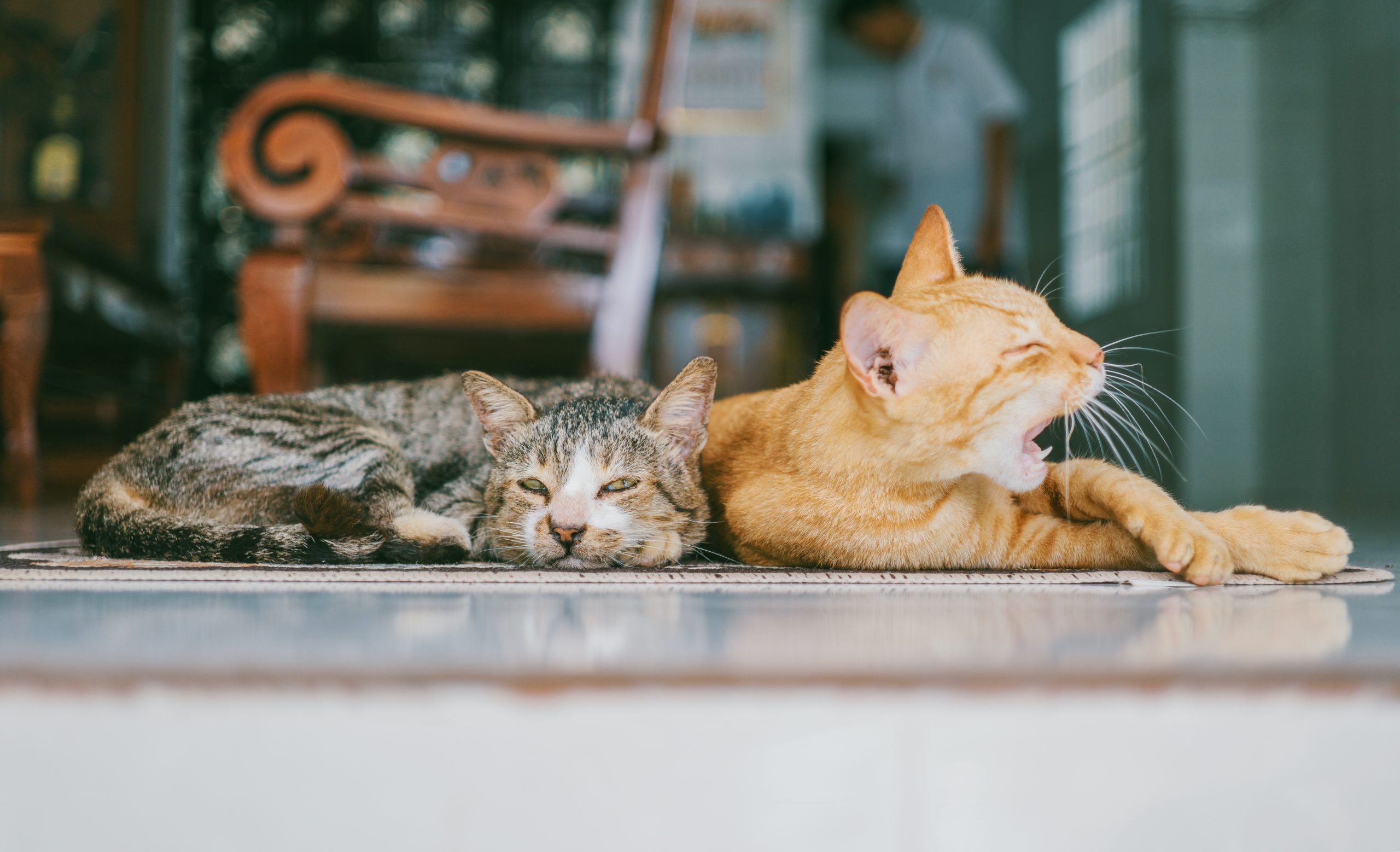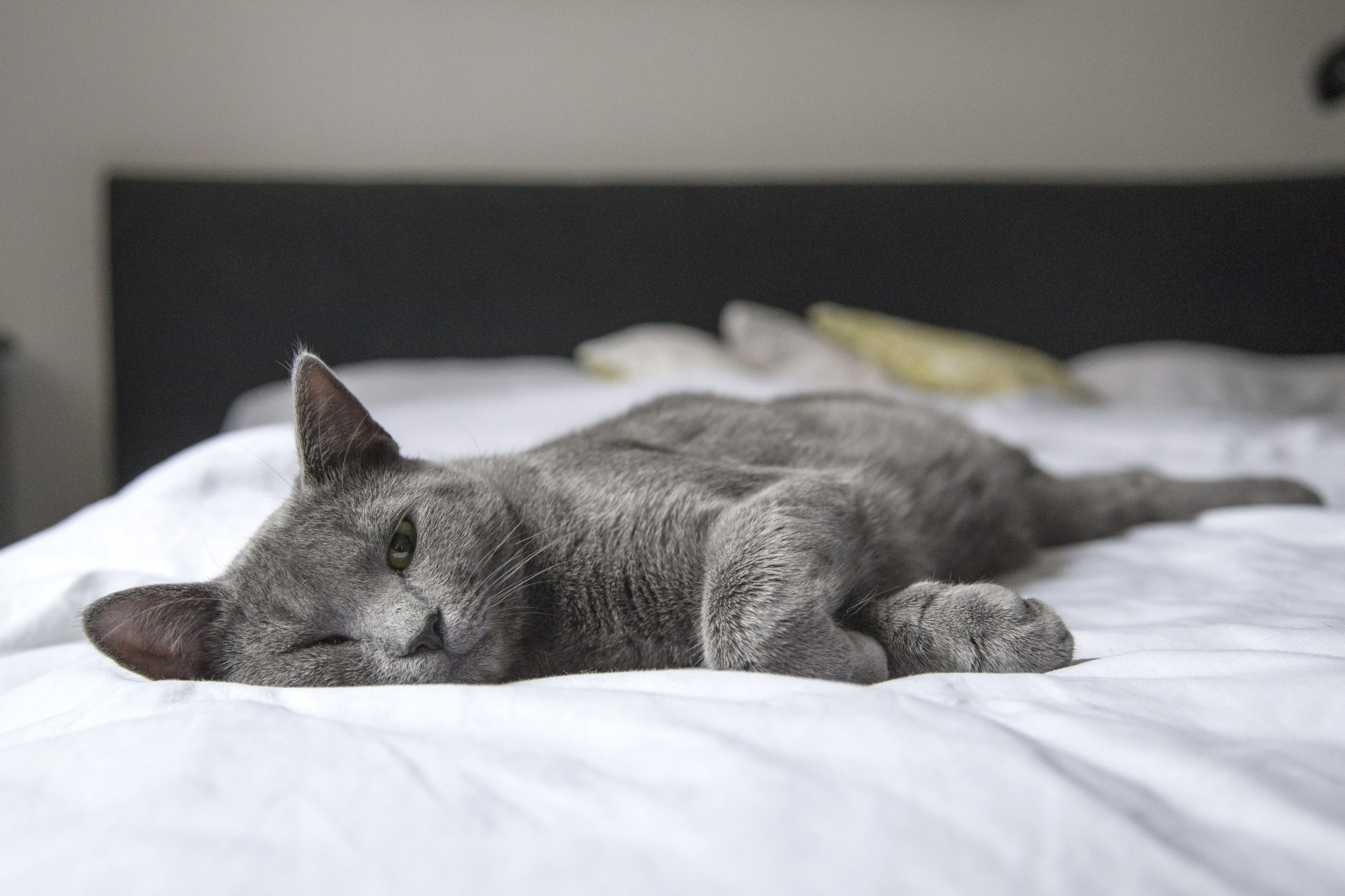With warm weather comes the Kitten season and peak boarding season, and these together bring an increased incidence of cat flu. This happens for the same reason kids have a permanent snotty nose in preschool, and why many people get colds after a long haul plane flight. Viruses thrive on close contact of members of the same species.
Most viruses are transferred by direct contact – even the human flu virus is most efficiently shared around on hands rather than by direct sneezing onto someone else!
However, Cat Flu, really, should not be regarded with such fear as it used to be, as long as your cat is vaccinated and is in good general health.
Types of cat flu viruses
The Cat Flu viruses are not from the same group or type of viruses as the human colds and flu, which is why humans are never affected.
The two main ones are Calici virus and Herpes virus and each have interesting strategies for keeping themselves perpetuated. The main one is the fact that cats do not mount a completely effective immunity to them. They tolerate some level of the virus in their systems for prolonged periods without showing any signs (the carrier state). This means the viruses are kept warm and safe for transfer to the next susceptible cat.
Vaccination cannot be more effective at protecting or eliminating a virus from a host than the original virus is.
Flu vaccination in cats is therefore, defined as successful if a vaccinated cat shows 50 percent less clinical signs when infected than a cat that has not been vaccinated. So what is the point of vaccination? In the same manner as vaccinations against the annual human influenza strains will help but not totally eliminate symptoms of flu, feline vaccination does not mean the cat will not get flu, but it does mean it will not die from it.
The excellent survival rate is a function of better nursing and basic health in the cats, as well as the pre-emptive protection of vaccination.
Reservoirs of the flu viruses
One of the major reservoirs of the flu viruses in cats are the kittens, in the same way as young children are the main spreaders of colds and flu in people.
Once viruses, any viruses, get into young animals, they are absorbed and reproduce in much larger numbers, partly because the young animals are growing rapidly so all cells are stimulated, but also because their immunity has not yet developed to get rid of infections very efficiently.
Kittens can get the Herpes virus from their mothers as young as 5 days old. This virus, in cats as in humans, lasts forever by lurking in nerve tissue in various locations. And, as it happens in humans, so it happens in cats, that when they are stressed – emotionally as well as physically – the virus jumps at the chance to replicate and spread. Humans get cold sores, cats sneeze!
This syndrome is particularly prevalent in the purebred cats for an assortment of reasons. However, it is manageable and no one is going to give up on the cat because it sneezes regularly!
How often do cats need to be vaccinated?
The new issue for cat owners is how often do cats need to be vaccinated? Over the last 30 years, both the general health of cats, and the quality of the vaccines has improved. Much research now indicates that healthy cats that have regular contact with other cats (i.e. the out-and-about cats) may only need to be vaccinated every couple of years. Even totally indoor cats may get away with biennial (2 yearly) vaccination. If it has been over this time period give me a call in Roseville or contact your own vet. A check in time will save trouble later.
However, if a cat goes boarding, then there is the likelihood of stress and exposure, and an annual vaccination is still recommended.
Does every sneezing cat have flu?
No, lots of cats get hay fever too, or react to pollen or pollution (especially after fires) or strong chemicals if they sniff them. If your cat is sneezing only once or twice a day, sneezes only clear fluid (mucous) and is not off their food, then the diagnosis is likely to be mucosal irritation from one of the above agents.
However, if the eyes get puffy, the cat stops eating or the sneezes get snotty (which means bacterial involvement), then greater intervention is required.
Viruses cause Cat Flu, so treatment is mainly to make the cat comfortable while its own immunity gets rid of the virus. There is a reasonably effective anti-viral medication (famcyclovir) to help cats get over the Herpes Virus flu, and although expensive, it is worth using in young cats with herpes flu and any cat with the corneal (eye) ulcers that arise from an attack by this virus. Antibiotics can help with the ‘cat flu’ caused by the Chlamydia (now Chlamydophila) bacteria, but are otherwise only treating secondary infections, and are not recommended routinely.
Interestingly, there are no symptoms of infection until the body challenges the virus – sneezing means you are doing something about it! And the most contagious time is before the sneezing starts.
Contact with other cats is the main source of viral spread, but the Herpes and Calici viruses can survive in the open air for up to a week, so a cat sniffing a bush can get the virus from the cat who sneezed on it a couple of days ago. Boarding, moving house and fights with other cats are all sources of stress which can reactivate a cat’s own viruses. Or they can contact the virus on any number of surfaces.
Staying generally healthy, appropriate vaccination and minimizing stress will keep the flu at bay.
Nothing, however, will eliminate Flu viruses from our cats’ lives and they live with lots of other dangers (like cars, abscesses and some of the other viruses), which are more likely to permanently maim or kill them. Keep a watching brief and keep Flu in perspective.
About the Author
Dr. Kim Kendall, BVSc MANZCVS (Cat Medicine and Animal Behaviour) is one of the best known feline vets and behaviorists in Australia and the world.
 Since 1994 her dedicated cat-only veterinary, boarding and grooming centre, The Chatswood Cat Palace has been based on Sydney’s North Shore.
Since 1994 her dedicated cat-only veterinary, boarding and grooming centre, The Chatswood Cat Palace has been based on Sydney’s North Shore.
Dr. Kim has a passion for improving feline health, and wants the best emotional and physical wellbeing for all cats at home. She achieves this by incorporating real science to back up clinical judgement.
She is also a pioneering expert in the field of Feline Friendly Care at home and at the vet clinic and has written extensively on the subject.



